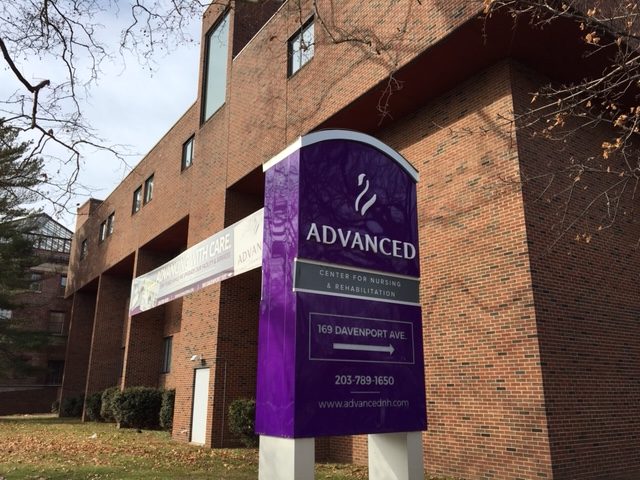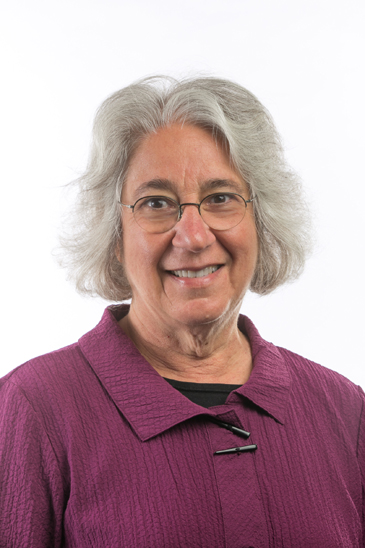The order, agreed to in April by the Advanced Center for Nursing and Rehabilitation and the state Department of Public Health (DPH), tasked the independent nurse consultant with assessing the staff’s ability to do their jobs and evaluating how care is delivered. The minimum staffing ratios ordered are 30 patients to one licensed nurse on all shifts, on most units; 10 patients to one nurse’s aide on the first shift; 12 patients to one nurse’s aide on the second shift; and 20 patients to one nurse’s aide on the third shift. Officials at the facility didn’t return calls seeking comment.
It isn’t often that DPH mandates staffing or requires nursing homes to hire consultants, but the order reflects a broader emerging problem affecting the care provided at many nursing homes: insufficient staffing levels and caregivers who lack training.

C-HIT Photo.
The Advance Center for Nursing and Rehabilitation was ordered by the state to hire an independent consultant and mandated staffing ratios.
“It’s an enormous problem,” said Toby S. Edelman, senior policy attorney at the Center for Medicare Advocacy, based in Washington, D.C. “Most of the bad outcomes are the result of insufficient staffing and insufficiently trained staff. It’s pretty much a universal problem.”
In Connecticut, there have been multiple times in recent years when nursing home residents have been injured in incidents when no or too few staff members were present.
Between 2015 and 2018, Connecticut nursing homes were cited by the state for 247 incidents involving lapses in care. Twenty-five of those cases involved incidents in which citations noted that two staff members were required to assist or move a resident and only one was used, according to a C-HIT analysis of DPH citations signed and finalized. Of those 25 incidents, 17 occurred between 2017 and this year.
The largest share of incidents — 65 — involved falls, which resulted in severe bruising and/or broken bones, between 2015 and 2018. Facilities were cited 37 times for residents suffering pressure ulcers caused by not following doctor’s care orders, or neglect; 31 times for causing general harm to patients; and 29 times for medication errors, some life-threatening.
Nursing homes are entrusted with caring for their elderly residents who are among the frailest and sickest members of the population, and who many times reside in facilities for long stretches of time or for the final years of their lives. Advocates say any lapse in care is one too many.
The occupancy rate at nursing homes has remained constant at an average rate of 87 percent in 2017 and the previous two years, according to the September 2017 state census report.
The state’s Public Health Code requires a level of licensed personnel and aides depending on the number of residents. For example, if a nursing home has 100 residents, a minimum of 140 hours of licensed care and aides are required from 7 a.m. to 9 p.m. and 50 hours of licensed care and aides are required from 9 p.m. to 7 a.m., according to DPH.
There’s no definitive way to gauge the number of staff members that corresponds with those requirements, since each facility is different and caregivers may work different hours depending on whether they are full- or part-time, said DPH spokeswoman Maura Downes.
Edelman said in some cases, staff members aren’t completing their assigned tasks — not because they don’t want to, but because there often isn’t enough staff to do everything.

Matthew Barrett, head of the Conn. Association of Health Care Facilities.
But generally, Connecticut nursing homes are adequately staffed to provide quality care to residents, said Matthew Barrett, president and CEO of the Connecticut Association for Health Care Facilities, which represents 150 of the 224 nursing homes in the state.
Many facilities in Connecticut are exceeding the minimums, which Barrett called “dated,” and the association has supported legislation to raise the minimum staffing levels.
A recent analysis by Kaiser Health News (KHN) reported that out of 188 Connecticut nursing homes, 12 had staffing levels below or much below average, 46 were ranked average and 130 had levels above or much above average. For registered nurse staffing levels, nine facilities were below or much below average, 31 were average and 148 were above or much above average. In its analysis, KHN examined daily nursing home payroll records released by the Centers for Medicare & Medicaid Services (CMS) that reported staffing levels from January to March.
Nursing Home Compare, an online tool run by CMS that assesses nursing homes based on several quality standards, shows 39 Connecticut facilities have staffing levels much above average, 88 rated above average, 41 at average, eight below average and 46 much below average as of December 2018. Staffing levels for two facilities weren’t available.
Ann Spenard, principal and vice president at Qualidigm, a Wethersfield-based consulting organization that works with nursing homes, said, “I don’t think you can say this is purely all about the staffing. A lot of it is about the culture.”
For example, she said, at some facilities staff members are not encouraged to ask for help or speak up when they can’t meet all of their job demands. Some employees feel certain tasks aren’t their job and teamwork isn’t valued, Spenard said.
Barrett echoed that sentiment. “The staffing numbers themselves don’t necessarily tell the quality-equation story. The issues of quality are not always easily explained with the staffing ratio analysis,” he said.
Turnovers Affect Care
Staff turnover is a challenge for many facilities, Spenard said. Nursing home jobs are rewarding, she noted, but caring for such a needy population can be demanding—physically and emotionally.
“Our turnover rate in this industry is almost 44 percent, and RNs have a median turnover rate of 50 percent,” she said. Many RNs would rather work in hospitals, where they can earn more money, and tend to move on from nursing homes once they have enough work experience, she said.
“Even in the best facilities there’s always some level of turnover,” Spenard said. “If you can decrease turnover, you can increase quality. All of that helps to improve staff morale, feeling part of the team and, ultimately, quality of care.”
Barrett worries that in the future it might be difficult for nursing facilities to fill jobs. When the unemployment rate is very low, it is increasingly tough for nursing homes to recruit and retain workers, he said.
“Staffing is a concern for Connecticut nursing homes and one that we should be watching very closely in this environment,” Barrett said. The association is “very concerned that inadequate staffing or staffing-related issues could be on the doorstep of Connecticut nursing homes because of these economic issues alone. We haven’t seen that yet, but we’re very concerned.”

Toby S. Edelman, senior policy attorney, Center for Medicare Advocacy.
There are few staffing requirements for nursing homes under federal law. The Nursing Home Reform Law of 1987, which hasn’t been updated, says facilities must employ a registered nurse for eight consecutive hours daily, licensed nurses (including RNs, licensed practical nurses and licensed vocational nurses) for 24 hours a day, and “sufficient” staff to meet residents’ needs, according to the Center for Medicare Advocacy.
Those requirements, which say nothing about staffing ratios, aren’t enough to ensure a competent workforce, according to Edelman. Federal legislation has been proposed to address the issue, but she isn’t optimistic things will change anytime soon because “there’s not a lot of interest in the administration to improve staffing,” she said.
Nursing homes “always have had a shortage of nurse aides,” Edelman said. “When there aren’t nurse aides, residents may not get bathed, they may not get assistance in eating. They may do one-person transfers instead of two-person. People just don’t get the things done that they should get done.”
Nationally, CMS is trying to get a better handle on facility staffing levels, and many nursing homes are trying to improve how they gather and report information, Spenard said.
On Nov. 30, CMS announced measures to increase nursing home oversight and improve transparency when it comes to staffing. Among the steps, CMS will: share data with states when potential problems arise regarding staffing and the availability of on-site RNs; clarify how facilities should report staffing hours; and offer new tools to help facilities get and report accurate censuses.
Even if facilities in Connecticut have relatively strong showings in reports, there’s still room for improvement, Edelman said.
“If Connecticut is doing better than most states, that doesn’t mean it’s doing well enough,” she said.

